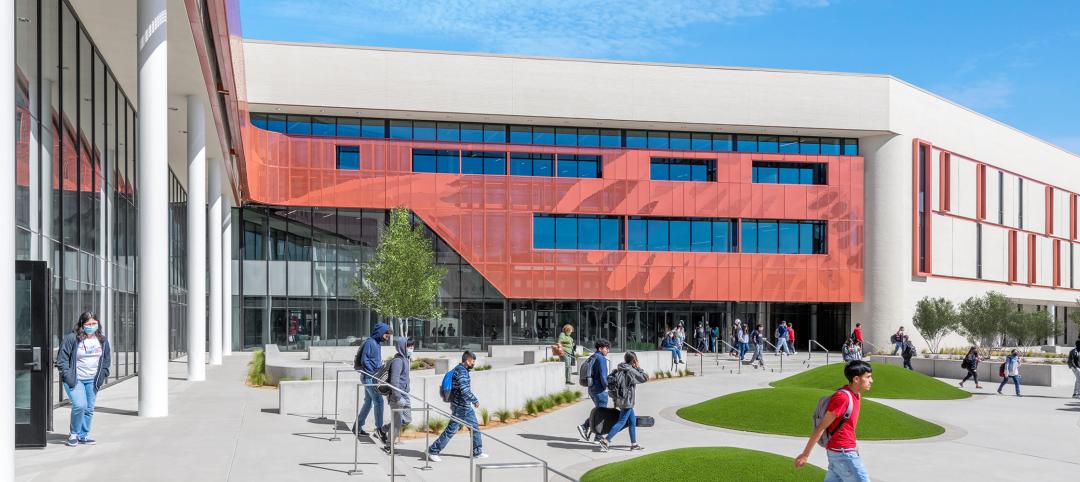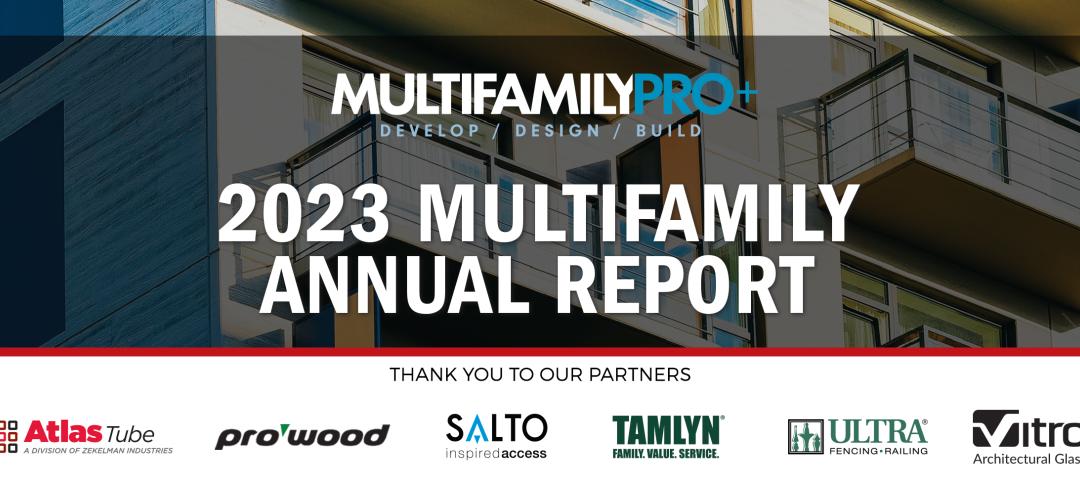BD+C: Why do you state that cities are “our greatest invention”?
Edward Glaeser: Cities matter because they magnify mankind’s greatest strengths. They help form the chains of collaboration and creativity that are behind everything that mankind has been able to do. Mankind’s greatest talent is the ability to learn from each other, and we learn more deeply and thoroughly when we’re face-to-face.
BD+C: You state that massive construction projects—stadiums, light rail, convention centers, etc.—cannot “stem the tidal forces of urban change.” Should mayors and city councils in declining cities just give up?
EG: I believe that there’s been a tendency to confuse cities with their structures. Cities are their people. There are places that need more structures, and they need fewer barriers to development. When you have artificial barriers, such as unrealistic height restrictions and burdensome environmental impact reports, there are tremendous costs from that. Declining areas have too many structures compared to the number of people.
The terrible thing about this strategy is that cities like Detroit need to invest in their children, so that they have the skills to survive in this economy. New sports arenas and the like are enormously expensive and distract city councils and mayors from the core business of providing a brighter future for the children of their cities through education.
BD+C: Detroit has become the poster child of the declining city. Do you have any advice for Mayor Dave Bing?
EG: If you look across the older colder-climate cities, the cities that have come back are those with the largest share of college degrees. Only 12% of Detroit adults have college degrees. I think Mayor Bing is being realistic about Detroit’s prospects. He’s a businessman. I would push him most on leveraging power of things like charter schools, and on top of that, fighting back against some of the regulations that still make it difficult to do business in the city. I was there recently, and there was a woman who was trying to start a business, a food truck, and she couldn’t get a permit because of regulations.
BD+C: “Poverty is usually a sign of a city’s success,” you write.
EG: The key point is that, throughout much of the world, cities attract poor people with the promise of jobs, cheap transportation, relatively affordable housing, and social services. That’s something cities shouldn’t be ashamed of.
BD+C: You advocate reducing the home mortgage interest deduction, which you cleverly call “a sacred cow in need of a good stockyard.” Aren’t you swimming in shark-infested waters here?
EG: It’s the job of an academic to do that. But there are two signs that this is being considered. The Administration’s federal housing finance reform package came out with a clear message that we should not be encouraging everyone to become a homeowner; and in the President’s budget, he sees a restriction on the amount of deductions you could take. The plan I like is to lower the upper limit of $1 million by $100,000 a year over several years.
BD+C: You comment on policies for “aesthetic interventions,” as espoused by the urbanist Richard Florida, versus “urban basics,” like public safety and good schools. Could you expand on that?
EG: Good public art is good, if it’s cheap. But you can’t tell a mayor that you really should have a public arts program, rather than getting the schools in order and having a well-functioning police department. The arts can’t be seen as something that’s going to trump the basics.
Take the case of Bilbao. That museum certainly generated a lot of tourism, but how many jobs were created? Bilbao is the one such project that hit the jackpot. How many others were subsidized, as in Sheffield, England, where the National Centre for Popular Music closed the year it opened. These projects come and go, with massive subsidies, and you have to be wary of them.
BD+C: What about the balkanization of our school districts? Should school funding be more equalized, no matter where the child lives?
EG: This is obviously a huge issue. The most helpful things we have seen so far have been the charter schools. Being an economist, I think competition among schools is the best way to keep upwardly mobile families staying in the city. The great urban virtues are competition and entrepreneurship, and that’s what we’ve not done with our public schools, which are large public monopolies. And because cities do attract poor people, for many reasons, it shows how hard it is to move that dial, even when, as in Chicago and New York and Washington, D.C., you have some of the best people working on the problem.
BD+C: You also state that immigration is “essential to urban success.” That’s hardly a popular sentiment in many parts of the U.S.
EG: Immigration is absolutely essential to the success of our cities. The case is easiest to make for H-1B visas, where we get skilled workers who are going to add energy to the economy, pay more in taxes than they’re going to take out, and who are not going to cause social problems. We should be enabling more people who are skilled and want nothing more than to work in America. Cities are good for immigrants and immigrants are good for cities. BD+C
Related Stories
Giants 400 | Oct 30, 2023
Top 170 K-12 School Architecture Firms for 2023
PBK Architects, Huckabee, DLR Group, VLK Architects, and Stantec top BD+C's ranking of the nation's largest K-12 school building architecture and architecture/engineering (AE) firms for 2023, as reported in Building Design+Construction's 2023 Giants 400 Report.
Giants 400 | Oct 30, 2023
Top 100 K-12 School Construction Firms for 2023
CORE Construction, Gilbane, Balfour Beatty, Skanska USA, and Adolfson & Peterson top BD+C's ranking of the nation's largest K-12 school building contractors and construction management (CM) firms for 2023, as reported in Building Design+Construction's 2023 Giants 400 Report.
Giants 400 | Oct 30, 2023
Top 80 K-12 School Engineering Firms for 2023
AECOM, CMTA, Jacobs, WSP, and IMEG head BD+C's ranking of the nation's largest K-12 school building engineering and engineering/architecture (EA) firms for 2023, as reported in Building Design+Construction's 2023 Giants 400 Report.
MFPRO+ Special Reports | Oct 27, 2023
Download the 2023 Multifamily Annual Report
Welcome to Building Design+Construction and Multifamily Pro+’s first Multifamily Annual Report. This 76-page special report is our first-ever “state of the state” update on the $110 billion multifamily housing construction sector.
Giants 400 | Oct 23, 2023
Top 190 Multifamily Architecture Firms for 2023
Humphreys and Partners, Gensler, Solomon Cordwell Buenz, Niles Bolton Associates, and AO top the ranking of the nation's largest multifamily housing sector architecture and architecture/engineering (AE) firms for 2023, as reported in Building Design+Construction's 2023 Giants 400 Report. Note: This ranking factors revenue for all multifamily buildings work, including apartments, condominiums, student housing facilities, and senior living facilities.
Affordable Housing | Oct 20, 2023
Cracking the code of affordable housing
Perkins Eastman's affordable housing projects show how designers can help to advance the conversation of affordable housing.
Senior Living Design | Oct 19, 2023
Senior living construction poised for steady recovery
Senior housing demand, as measured by the change in occupied units, continued to outpace new supply in the third quarter, according to NIC MAP Vision. It was the ninth consecutive quarter of growth with a net absorption gain. On the supply side, construction starts continued to be limited compared with pre-pandemic levels.
Warehouses | Oct 19, 2023
JLL report outlines 'tremendous potential' for multi-story warehouses
A new category of buildings, multi-story warehouses, is beginning to take hold in the U.S. and their potential is strong. A handful of such facilities, also called “urban logistics buildings” have been built over the past five years, notes a new report by JLL.
Building Materials | Oct 19, 2023
New white papers offer best choices in drywall, flooring, and insulation for embodied carbon and health impacts
“Embodied Carbon and Material Health in Insulation” and “Embodied Carbon and Material Health in Gypsum Drywall and Flooring,” by architecture and design firm Perkins&Will in partnership with the Healthy Building Network, advise on how to select the best low-carbon products with the least impact on human health.
Contractors | Oct 19, 2023
Crane Index indicates slowing private-sector construction
Private-sector construction in major North American cities is slowing, according to the latest RLB Crane Index. The number of tower cranes in use declined 10% since the first quarter of 2023. The index, compiled by consulting firm Rider Levett Bucknall (RLB), found that only two of 14 cities—Boston and Toronto—saw increased crane counts.

















